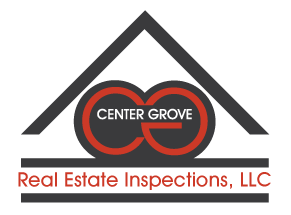You probably don’t spend much time in the attic of your home or business, but there are a lot of important features hidden in this unused space that you should keep conscious of, especially with the winter months on the horizon. Before the cold weather moves in, having your attic inspected can help to save you money – and even possibly your life. Here are three major areas that a professional inspector will review in your attic to make sure that your home is safe, sealed and secure.
Insulation
First and foremost, an inspector will review your home’s insulation and look for signs of sagging or insufficient insulation that could be costing you money. A poorly insulated home practically bleeds money – the warm air heated inside at your expense seeps out through these gaps in protection, and cost you more money to maintain the same level of warmth. Each home should have an appropriate thickness of insulation to keep the heat in – what is known as the “R-level” – with colder climates needing a higher R-level, or greater thickness, to negate the chill outside. An inspector can review your attic’s insulation to ensure that not only there is a sufficient thickness to your insulation, but also that it has been installed correctly and that there aren’t problem areas that could be secretly costing you potentially hundreds of dollars or more each winter.
Leaks, Cracks and Mold
Structural problems can also be hidden in the oft-unvisited attic space. This can be cracked ceiling joists or rafters, worn trusses or even damage from pests like mice, squirrels or termites. There may also be problems with the original construction. When the home was originally built, improper techniques may have been used and your home may be subject to a sagging roof – or potentially even a collapse – if the home was built incorrectly. Last, an inspector will also examine the attic space for signs of water leaks or damage. Cracks in the roof can allow in moisture, which can cause wood to wear and rot, destroy insulation and even lead to mold and mildew growth – a potentially serious health hazard if left untreated. An inspector can ensure that your attic is in proper order or make recommendations on how to proceed with any repairs or remediation that might be needed.
Carbon Monoxide
Lastly, an inspector will also check your attic and examine any chimneys or exhaust vents that pass through the space. Over time, your chimney’s lining and even the sidewalls can wear, potentially leading to cracks that leak into the home. This can occur from excessive soot or creosote buildup that caused a fire and damaged the chimney, condensation of natural gas exhaust fumes –which can create a form of acid – or even rogue animals that may have used the chimney to access your home. If the chimney is damaged, it could be venting hazardous smoke and fumes, like carbon monoxide, into your attic. Carbon monoxide is odorless and can be fatal if not detected in time. Making sure that your chimney and ventilation is working properly is not only a good idea to ensure that your heating system is working properly, it could even safe your life.
Don’t keep paying more than you need to in heating or risk you and your family’s lives this winter. Contact Center Grove Real Estate Inspections today to schedule your inspection appointment.

Leave a Reply